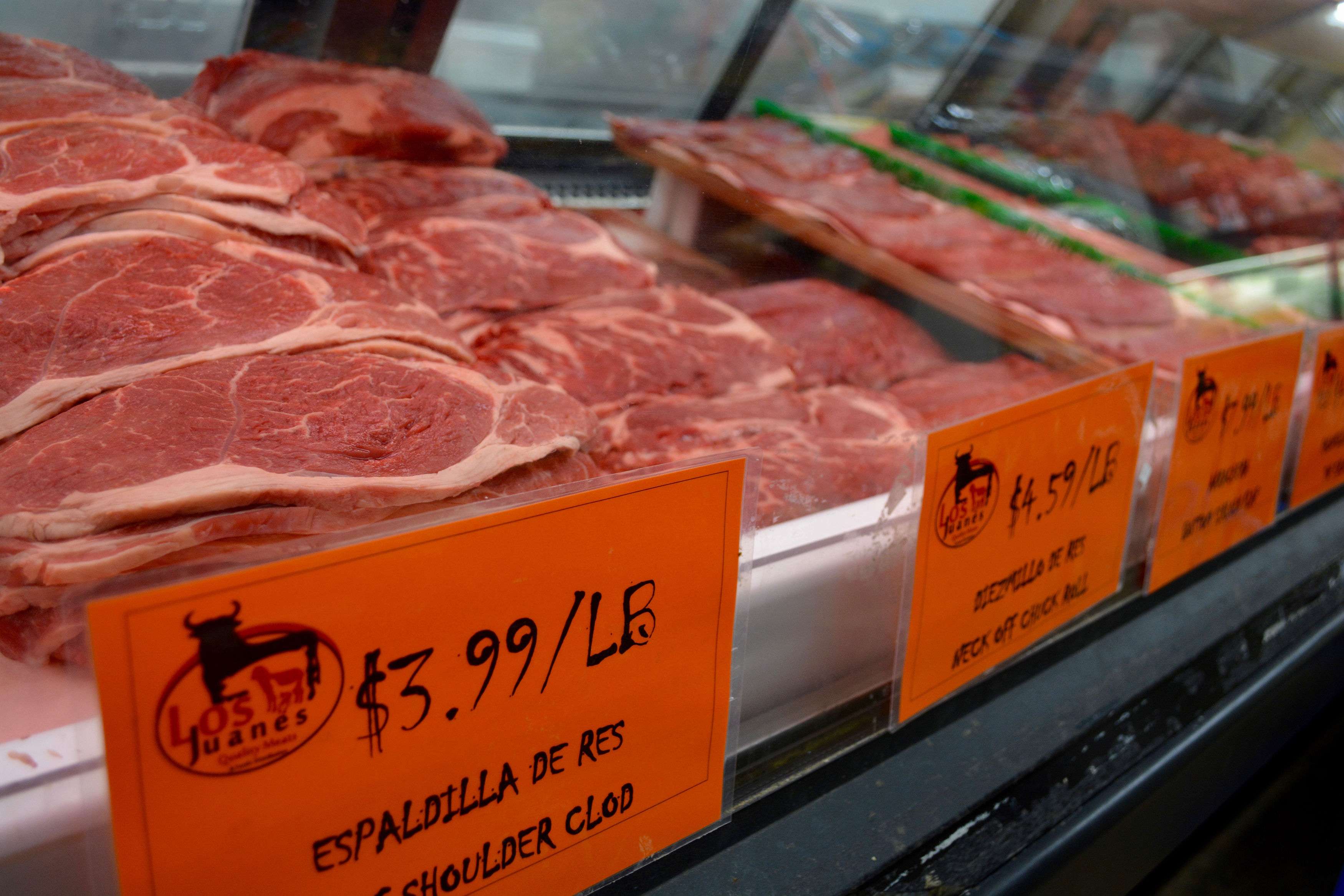Why Bagley Farms Meat Market Edwardsville IL Is the most effective Option for Top Quality Meats
Why Bagley Farms Meat Market Edwardsville IL Is the most effective Option for Top Quality Meats
Blog Article
Reveal the Art of the Butcher's Cut in a Modern Meat Market
In the ever-evolving landscape of contemporary meat markets, the butcher's cut has actually transcended its conventional origins, combining old-time workmanship with modern techniques. What genuinely sets the modern butcher apart is their capacity to forge a much deeper connection between consumers and the beginnings of their meat.
Evolution of Butchery Techniques
The evolution of butchery techniques reflects a rich tapestry of development and adaptation driven by advancements in technology, adjustments in customer need, and a much deeper understanding of meat scientific research. Historically, butchery was a craft gave via generations, with techniques honed over centuries to maximize yield and taste. However, the commercial revolution introduced mechanization, changing traditional practices and allowing large-scale processing.
The mid-20th century saw butchery techniques additionally improved by clinical insights into muscle biology and meat aging, improving both tenderness and preference. Advancements like vacuum cleaner product packaging and refrigeration expanded item shelf-life, allowing butchers to diversify offerings and improve high quality control. This duration likewise noted the increase of customized tools, such as band saws and meat slicers, which raised accuracy and performance in meat handling.

Electronic systems now help in monitoring animal provenance and maximizing cuts to meet specific customer choices. Additionally, a renewal in artisanal butchery has actually arised, mixing standard abilities with modern knowledge to cater to customers seeking honest and lasting meat alternatives.
Recognizing Meat Cuts
Recognizing the ins and outs of meat cuts is vital for both butchers and consumers seeking quality and worth. Each cut originates from a different part of the pet, passing on distinct tastes, structures, and cooking approaches - bagley farms meat market edwardsville il. Mastery of these distinctions not just improves cooking experiences however likewise makes the most of the energy of each carcass. For butchers, accurate cuts reflect skill and regard for the craft, ensuring minimal waste and optimum yield.

Recognizing muscular tissue structure is essential; muscles made use of a lot more frequently by the pet have a tendency to be tougher and are best matched for sluggish cooking approaches, while less-used muscle mass, like those Bonuses found in the loin, are more tender and perfect for barbecuing or roasting. Familiarity with these differences equips customers to make educated choices, improving their culinary undertakings.
Choosing Quality Meat
Choosing the best meat entails even more than simply selecting a visually appealing piece from the display. The art of selecting high quality meat calls for a discerning eye and understanding of certain attributes that symbolize quality and quality.
Secondly, consider the marbling, which refers to the white flecks of fat within the muscle mass. Appropriate marbling is a vital indication of tenderness and flavor, as it melts during cooking, enhancing the meat's juiciness. Keep in mind, higher marbling often correlates with premium quality cuts, such as USDA Prime.
Texture is an additional critical variable; meat needs to really feel strong to the touch, not slimed or extremely soft. In addition, be conscious of the aroma. Fresh meat needs to have a tidy, neutral odor, devoid of any kind of sour or repulsive odors.
Matching Cuts With Cooking Methods

Conversely, tougher cuts like brisket and chuck roast are abundant in collagen, which breaks down right into gelatin when prepared gradually. These cuts are ideal for braising or slow roasting, enabling the meat to soften with time and develop deep, complicated tastes. Similarly, cuts such as short ribs and pork shoulder prosper with slow-cooking methods, where prolonged cooking times change their robust appearances into succulent recipes.
Lamb shanks and oxtail, which require extended cooking to tenderize, are ideal prospects for cooking or slow-moving simmering. These approaches coax out rich, hearty flavors while keeping moisture. By recognizing the unique qualities of each cut, cooks and home chefs alike can elevate their cooking creations, ensuring each dish is both pleasing and memorable.
The Butcher's Function Today
Browsing the developing landscape of the modern-day meat market, the butcher's role today expands beyond plain preparation of cuts. Contemporary butchers are cooking artisans, teachers, and supporters for sustainable techniques.
Along with crafting exact cuts, butchers now engage straight with customers, using cooking guidance and customizing options to fit specific requirements and choices. Their expertise in meat aging, marbling, and flavor accounts encourages consumers to make enlightened decisions, enhancing their cooking experiences. This personalized service exemplifies the butcher's advancing role as a trusted expert in the kitchen.
Furthermore, butchers are crucial in reducing waste, using entire pets to produce varied products such as sausages and stocks. This thorough approach not just appreciates the pet however additionally aligns with modern sustainability objectives. This way, the contemporary butcher symbolizes both tradition and advancement, adjusting to an ever-changing market while preserving the creativity and honesty of helpful hints their craft.
Conclusion
Mastery in understanding varied meat cuts and high quality signs empowers butchers to supply educated referrals, lining up specific cuts with ideal cooking methods. By recognizing historic methods while embracing contemporary needs, the butcher's function remains essential in today's advanced meat market.
Report this page